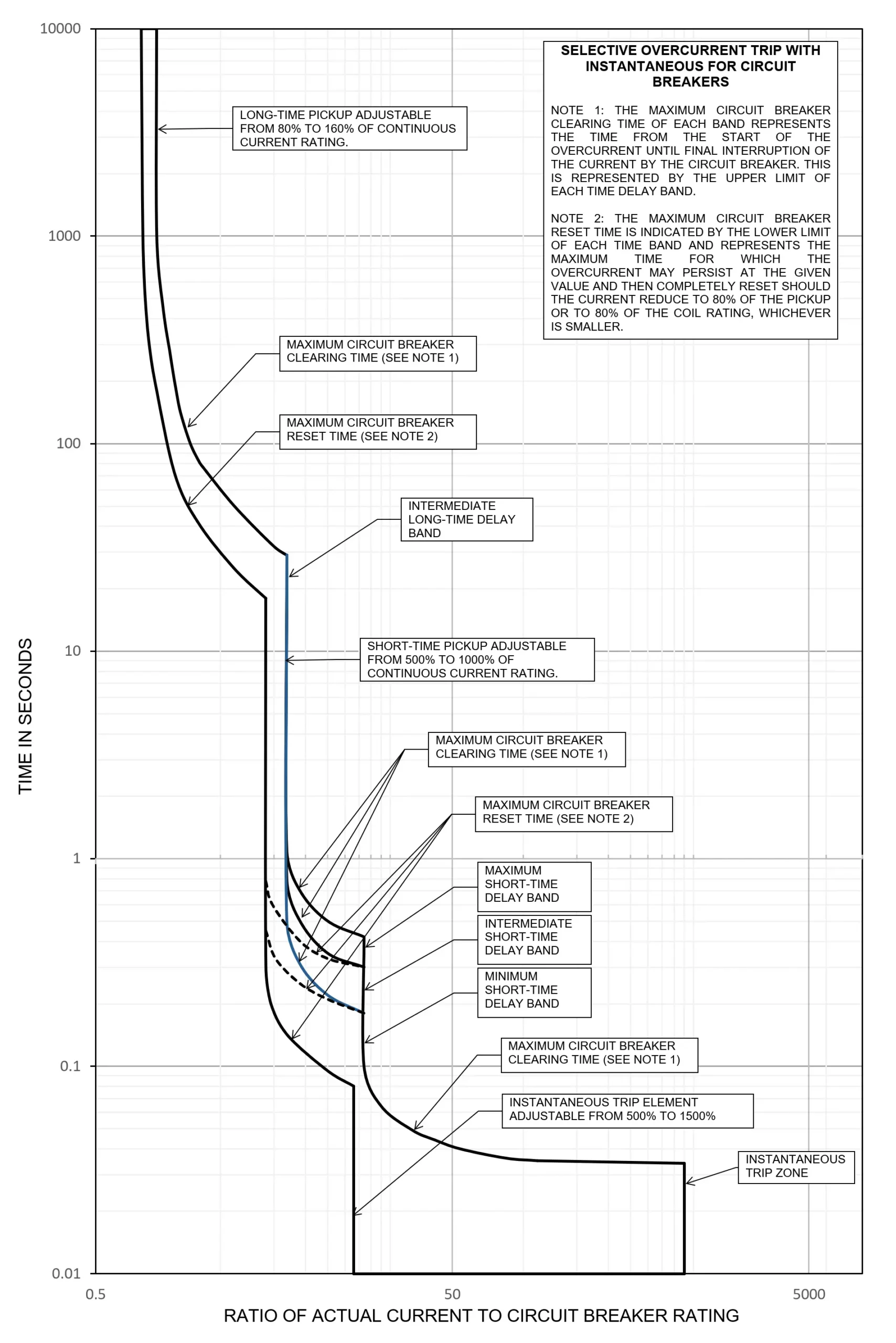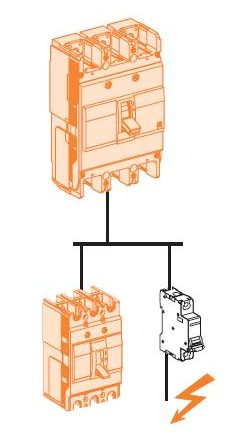High Capacity Service Entrance
High capacity service entrances are those installations having continuous current ratings above 600 amperes and available fault currents up to 130kA rms symmetrical amperes at 240 volts and 85kA at 460 volts. The continuous-current requirements for this service entrance are usually beyond the capacity of molded-case circuit breakers, hence metal-enclosed switchgear with its higher capacity circuit breakers are often used. A main circuit breaker selected for its continuous-current capacity may often have enough interrupting ability.
There are three basic types of low-voltage circuit breaker distribution systems:
- Selective-trip system
- Fully-rated system (nonselective),
- Cascade system (nonselective) and
Selective-trip Systems
The best continuity of service is obtained in the selective system. It is possible to coordinate the tripping elements of all circuit breakers. In this system, only the breaker nearest the fault opens and isolates the faulted circuit from the system and leaves the main circuit breaker intact and operating to serve the rest of the distribution system. The selective system is of paramount importance to maintain full use of other facilities even though one branch of an electric circuit has failed. In large installations requiring main distribution switchgear plus sub-distribution circuit breakers, this selectivity becomes even more important.
The following requirements should be observed:
- Each circuit breaker equipped with selective tripping devices should have a short-time rating equal to or greater than the short-circuit current available at the point of application. This does not apply to feeder breakers (not having other sub-distribution breakers beyond these breakers) having instantaneous overcurrent tripping devices, whose interrupting rating should be equal to or greater than the short-circuit current available at the point of application.
- To accomplish the selectivity of the system the tripping characteristics of the breaker overcurrent devices should not overlap.
- Breakers which depend upon manual mechanisms should be limited to applications in which the delayed tripping requirements do not exceed 14,000 symmetrical rms amperes. Breakers with independent manual (spring closing) mechanisms may be used up to their short-time interrupting rating. In other words, breakers having short-delay overcurrent tripping that are applied to systems where the available short-circuit current is above 14,000 symmetrical rms amperes should have electrically or independent manual (spring closing) mechanisms. Breakers applied to the same system but having instantaneous trips set at 14,000 rms symmetrical amperes or less may be manually or electrically operated. Also, another rule is to use electrically operated breakers of 1600 amperes or larger.
- A maximum of four low-voltage air circuit breakers can be operated selectively in series, one of these being the last or load end feeder breaker with instantaneous overcurrent tripping.
- Attention is directed to the fact that selective tripping requires coordination with the utility company system and with load devices.

Fully Rated (Nonselective) System
In this system each breaker must be able to interrupt available short-circuit current at the point of application, that is each breaker interrupting capacity should be equal to or greater than the available fault current. For overload conditions selectivity generally can be obtained, but under short-circuit condition not only the breaker nearest the fault will trip but also the breakers in series with it. This is very disturbing to business operations and therefore it is not desirable nor permissible in important installations such as where the public is involved.
Cascaded Systems
If the available fault currents are higher than the interrupting rating of the feeder breaker, it is possible to use a cascade arrangement so that the rating of the feeder circuit breaker can be reduced, permitting a reduction in the initial investment.
Cascading is the application of circuit breakers in which the breakers nearest the source of power have interrupting ratings equal to, or greater than the maximum available fault current, and where one or more breakers further removed from the power source have interrupting ratings less than the maximum available fault current at the point of their application.
In the cascade arrangements, circuit breakers toward the source of power must be provided with instantaneous tripping for currents that may flow for faults beyond other circuit breakers nearer the load. Hence, the main breaker (or group feeder breaker as the case may be) should be carefully selected to force it to trip for a feeder fault and therefore interrupt load on the remaining feeder circuits. Such arrangements are used where the possible damage to equipment is acceptable,
Cascading must be limited to one step as out- lined in the following paragraphs:
- The interrupting rating of the circuit breaker or breakers nearest the source should be equal to, or exceed, the maximum available fault current that it may be required to interrupt. These breakers should be equipped with instantaneous series overcurrent tripping devices.
- The source breakers should give backup protection to the cascaded feeder breakers. To accomplish the backup protection, the instantaneous series overcurrent tripping devices on the source breakers should be set at such a value of current that the source breakers are tripped instantaneously whenever the fault current through the cascaded feeder breaker exceeds 80 percent of interrupting rating of the cascaded feeder breaker.
- The cascaded feeder breakers should be selected so that the maximum available fault current at that point does not exceed the “through cascaded breaker rating.” The breaker should be equipped with instantane- ous trips set to override the inrush of the load.
- All circuit breakers subjected to fault currents in excess of their interrupting rating should be electrically operated from a remote position only, to provide protection for the operator in the event of closing into a fault. In switchgear assemblies, it is permissible to locate the breaker control switch or pushbutton on an adjacent unit.
- Where cascading is proposed, recommendations should be obtained from the manufacturer in order to insure proper. coordination between circuit breakers.
- The operation of circuit breakers in excess of their interrupting rating is limited to one interruption, after which inspection, mainte- nance, or complete breaker replacement may be required.
- Molded-case circuit breakers are not recommended for use in cascade.
It is important to note that with a cascaded system the selectivity between the feeder breakers and the main breaker is lost for the larger fault currents.
It is very important to consider the effects of the available fault current beyond the service entrance equipment, and specifically at the distribution panel closest to service entrance equipment. At this point it is not usually feasible to install the higher ratings of metal-enclosed switchgear, so that some means must be found to reduce the available fault current at these points.
